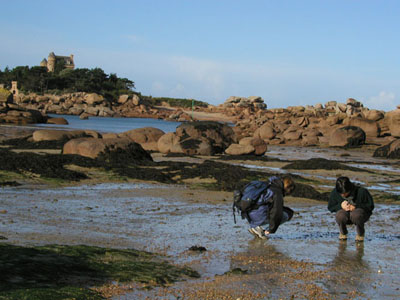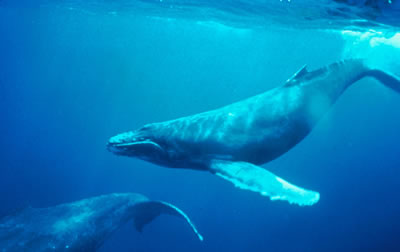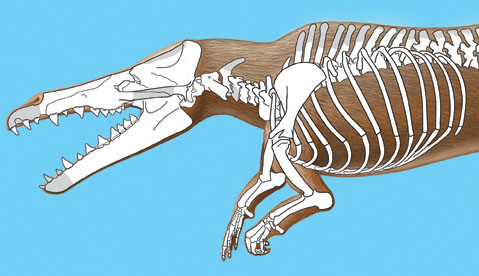Click on image for full size
Courtesy of NOAA
The Ocean Biome
The ocean holds the largest of Earth’s biomes. It covers 70% of the planet’s surface.
Life in the ocean is diverse. The smallest creatures that call the ocean home are so tiny that they can only be seen with a microscope. The largest creatures are blue whales, which can be as much as 34 meters (110 feet) long. There are many different ways to live in the ocean, too. Some animals travel huge distances through ocean water. Others stay in the same place on the ocean floor their entire lives. Some burrow beneath the sand while others float near the surface.
The ocean is not the same everywhere. There are many different ecosystems within the ocean depending on conditions such as the water temperature, the amount of sunlight that filters through the water, and the amount of nutrients.
Sunlight breaks through the top layer of ocean water. It can make its way as deep as 200 meters (656 feet). Almost all marine life (about 90%) lives within this top, sunlit layer of the ocean. There, phytoplankton, algae, and plants like seagrass make their own food through the process of photosynthesis and are the start of most marine food chains.
The temperature of ocean water varies depending on its location. Water near the polar regions is colder than water near the equator. Water that is deep in the ocean is colder than water that is near the ocean surface. Many animals and other organisms can only survive at certain temperatures. Others are able to survive at a range of temperatures and can live in more places in the ocean.
The following links give an overview of four different environments where life flourishes in the ocean.
- Life in the Intertidal Zone - Where the ocean meets the land, hardy animals, plants, and algae make their homes between the low tide and high tide levels.
- Life in the Open Ocean – The largest area of the marine ecosystem, the open ocean is home to swimming fish, drifting plankton, and other creatures.
- Life in the Shallow Ocean – In the sunlit parts of the shallow ocean, many animals, plants, and algae thrive on the seafloor as fish zoom above.
- Life in the Deep Ocean – This cold, dark world offers some very unusual extreme environments where many living things have found ways to survive.















